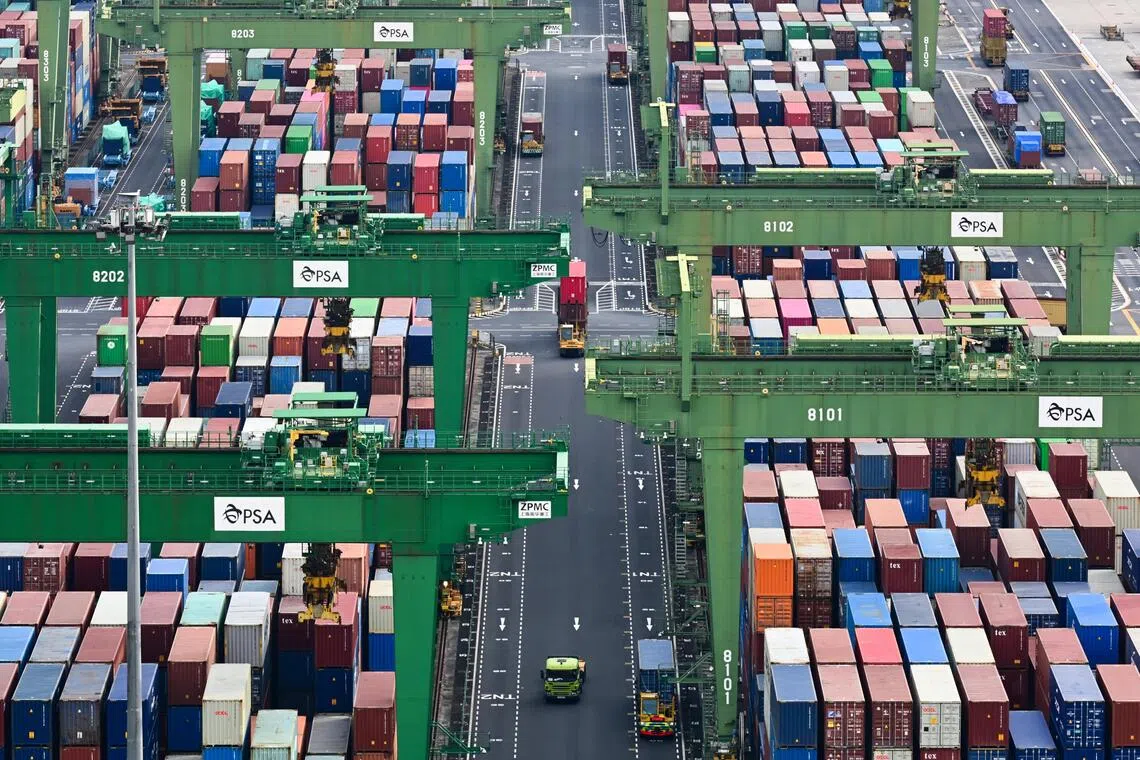Singapore adds 94 ships to registry in September as vessel reflagging accelerates
Sign up now: Get ST's newsletters delivered to your inbox

The total number of Singapore-flagged ships has hit 4,230, with around 8 million gross tonnage added in September alone.
ST PHOTO: LIM YAOHUI
Follow topic:
SINGAPORE – The Singapore Registry of Ships (SRS) added 94 ships to its fleet under the Singapore flag in September, as more foreign shipowners sought to avoid exposure to US port fees on China-built ships.
This takes the total number of Singapore-flagged ships to 4,230, with around eight million gross tonnage added in September alone.
The SRS now has a total of 127.8 million gross tonnes, up more than 19 million tonnes since the start of 2025, compared with just an 8.5 million tonne gain for the whole of 2024, according to preliminary data released by the Maritime and Port Authority of Singapore (MPA).
The larger shipping registry represents a boon to Singapore’s maritime ecosystem, driving demand for high-value services such as ship financing and insurance, while reinforcing its reputation as a trusted maritime hub.
The jump in the number of ships on the SRS also comes as a result of more shipowners reflagging their vessels under Singapore to avoid port fees as trade tensions escalate between the US and China.
The two superpowers on Oct 14 began levying the fees on ocean shipping firms
The US move, announced earlier in 2025, is intended to counter China’s hold on shipbuilding, a sector in which it is reported to have more than half of the global market share.
In the first nine months of the year, China has seen a 23.5 per cent drop in the volume of newbuilding orders at its shipyards compared with the previous year, Seatrade Maritime reported.
Meanwhile, special charges will be levied on US-owned, operated, built or flagged vessels calling at Chinese ports, although Chinese-built ships would be exempted from the fees. The China-imposed fees will be collected at the first port of entry on a single voyage or for the first five voyages within a year beginning on April 17, 2026.
To circumvent the additional charges, shipowner Seaspan has moved around half its fleet of more than 220 container ships from the Hong Kong ship registry to Singapore’s since July, and reportedly relocated its headquarters to the Republic in October.
“The large increase in container ships comes mainly from a single owner, Seaspan, which has switched over 120 ships to the Singapore flag in the past three months,” said Mr Tan Hua Joo, an analyst at maritime intelligence firm Linerlytica.
Another shipowner, Hong Kong-listed Pacific Basin, on Oct 16 said it plans to reflag half its fleet of bulk carriers in Singapore to cut its exposure to new US port fees.
In a September report, HSBC estimated that China lines Cosco Shipping Holdings and Orient Overseas (International) could be hit by US port fees amounting to more than US$2.1 billion in 2026.
Cosco and US-based Matson have already reported paying millions in additional charges.
Still, the US and China agreed in South Korea on Oct 30
“Since the port fees have been paused, the number of ships to be switched will be significantly reduced from November,” Mr Tan said.
When contacted, MPA declined comment.


